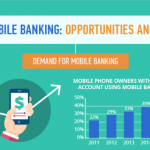How One Female Fintech Founder Beat The Odds—And Raised Millions For Child Support App
When former Silicon Valley exec Sheri Atwood landed $4 million in crucial Series A venture capital funding for SupportPay, an app designed to streamline child care payments, a lot of attention was focused on her personal story. She was a divorced mom and child of a painful broken marriage—so the show-me-the-money skirmishes were familiar territory.
But there was a second storyline at play that made SupportPay’s December VC win all the more significant: Atwood’s gender.
Last year in the U.S. just a handful of fintech companies founded by women raised Series A or Series B funding. In New York, there were two investment platforms—Sallie Krawcheck’s Ellevest ($9 million) and Wise Banyan ($3.5 million), and insurance broker PolicyGenius ($15 million). And in California there was online lender ApplePie Capital ($16.5 million), along with SupportPay ($4.1 million). Overall, billions poured into the sector.
Fast Company first spoke with Atwood last spring. We connected again last week, to talk about how her Series A score ultimately came together.
Why did you start SupportPay?
My parents had a horrific divorce. It felt as a kid that the only thing that mattered was the money. Deadbeat dad, and an uneducated single mom struggling to raise three kids on her own. I left and got married at 19, had daughter at 25. We got a divorce shortly thereafter and swore that it would be amicable, I didn’t want to put my daughter through what I had gone through. It cost us $350, and it worked. We went out for a drink to celebrate. But [my ex-husband] wasn’t good with money while we were married; he was even less good after we were divorced. The only time we ever saw each other was when we were handing over our daughter, and so during those times all those conflicts came up.
At the time, I was a vice president of global solutions and campaigns at Symantec, traveling the world. I was their youngest VP ever, and I ran into the typical big-company political issues. I remember my first performance review, after being promoted to VP, I was told that I was “too effective.” Excuse me? I realized that I was being told I was making my male peers look bad, and they didn’t like that. For me, it was like, if you’re going to pay me this amount of money I just want to do a good job. I left and went to a smaller company, where I faced even worse issues in terms of sexual harassment.
Then I found out my daughter had to have emergency brain surgery. (She’s totally okay now.) It put everything into perspective: If I’m going to be working this many hours, I want it to be on something I’m passionate about. The idea came across when I was doing an expense report. You submit a receipt and you get reimbursed. Why can’t we do the same for child support expenses?
How did you get started?
I’m the least likely person to become an entrepreneur. I was literally trying to find every reason not to do it. I thought, well, maybe I’m the only person with this problem. I interviewed a ton of parents, legal professionals. I found that in the U.S. alone there are 55 million parents that live apart. I quickly realized this wasn’t just a “me” problem, a lot of people were suffering from this. Then, I was interested in why parents weren’t paying. What I heard consistently was, I have no problem paying, I just want to know the money is going to my kid, and not to support my ex’s lifestyle. But there’s no system to keep a record of the payments. The onus is on the person paying to keep those records and have proof.
In the beginning I funded it myself. I didn’t want to take anyone’s money unless I knew I was in this 100%. I taught myself how to code, and coded the first version myself. I started beta testing it and did that for a good year on my own. After that I started bringing people on board and started the fundraising process.
And how did that go, at least initially?
It was at the peak of those news stories about fundraising—the 27th food delivery startup was getting millions, biggest seed round ever. I thought, I’m actually solving a problem that impacts so many parents, this shouldn’t be that hard. I was very wrong. I got to the point where I liquidated all my assets—my house, my stock. I was a week away from shutting down when I ended up getting [seed round] support from a group of investors led by [DFJ founding partner] Tim Draper and Salesforce Ventures.
What did they see that you think other investors missed?
They saw the need and also the social benefit it was providing. Especially here in the Valley, investors are more than willing to fund the 22-year-old white male problems. But all these problems facing the typical American over the age of the 30: No one is willing to do it. Unfortunately everybody is looking for a Mark Zuckerberg. When I say that I code, I’ve been tested in meetings. I wonder, have you ever asked a guy this? I passed their test.
What did it take to pull of your Series A?
We closed $4.1 million in December, led by Fenway Summer Ventures. It was incredibly difficult, compounded by the fact that the world changed. When we raised our seed capital, the consensus was to focus on user growth. Just get users on board, get them active and using the product. We weren’t focused on revenue. Then around March of last year, revenue became investors’ only focus. It required a huge shift in product, in strategy, in development. The whole rules of the game changed. At the time we were giving the product away for free, with the idea that eventually the it would be a monthly subscription. Our focus had to become getting users to convert to paid. We turned on revenue in June and started collecting revenue in July. That’s when we could start having conversations.
With revenue coming in, what kind of questions did you face?
The biggest question I faced and continue to face—is this that big of a problem? Or, if it is, isn’t someone doing this already? SupportPay combines fintech, law, family. You would think it was blue ocean. But we don’t fit squarely into any of their boxes.
If I learned anything, I learned that I should have turned on revenue a long time ago. Your growth is slower, but you’re only capturing people who are willing to pay and you prove that it’s a big pain that people are willing to pay for. Customer growth without revenue is more subjective—how many of your millions are users actually using the product?
Now that the money is in the bank, where do you go from here?
We’re adding additional functionality in terms of payment methods, calendaring, in-app messaging. That’s step one. Step two, we’re expanding into the family law market. Family law professionals are now maybe 20% of our customer acquisition. Our goal is to make that 40% and capture customers as they’re going through a divorce or separation. Third, we’re working with the state and government systems. Every state has its own system, and they’re incredibly difficult to use from a case worker perspective as well as a parent perspective. Our platform is much cheaper, and we don’t have to re-architect our product. (We built our system based on the architecture of the state systems.) Right now we’re in active talks with four states.
Aside from fundraising, what’s the biggest challenge you faced as a leader last year?
It’s hard to retain talent. Silicon Valley was not sustainable. I started exploring relocating the company, maybe to North Carolina or Texas. Then Sacramento approached me—why don’t you come here, we’ll offer you all of these resources. Now we have new office space with incredibly cheap rent, and they paid for the construction. They’re making connections with the state. Then of course the cost of living. As I’m hiring, employees are far more committed to staying with the company. We moved in September.
Fast Company , Read Full Story
(12)












